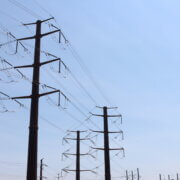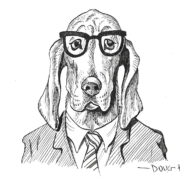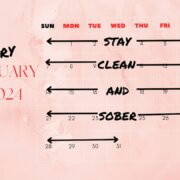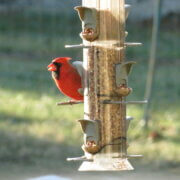By David Lillard
I first did a dry January several years ago when some friends were doing it. I received most of the promised benefits, plus some added insights. One is that alcohol features prominently in a lot of social settings. Duh. Hadn’t really noticed it before, but it’s everywhere. It must be a drudge to be one of the roughly third of Americans that doesn’t drink and be surrounded by loud tipsy people. A second insight was that some of the people I ran with really weren’t that interesting to me without that liquid social lubricator. And I suspect I wasn’t that interesting to them either. So long.
No on knows for sure who first came up with the idea of going on the wagon for the month of January. Likely, as long as there have been revelers waking on January 1 (probably in the afternoon) to declare, “I’m not drinking for an entire month!” These days, Dry January abstinence is observed (or attempted) by upwards of 13 percent of Americans, according to polling by
Morning Consult.
In the United Kingdom, Dry January is a registered trademark of Alcohol Change UK, which is celebrating its 11th year in 2024. In the United States, credit is often given to New York resident Frank Posillico, who is said to have coined the phrase in 2008. The distinguishing factor of the Dry January, as opposed to just deciding not to drink for the month of January, appears to be one’s public declaration of the goal — rather than suffering in silence and accepting any setbacks
in private.
According to polling company Gallup, roughly two thirds of Americans drink at least occasionally throughout the year, and up to half drink regularly. Most surveys also show a lingering uptick of daily drinking that began during the Covid-19 pandemic. Gallup polling suggests that religious people drink as much as the non-religious, although data cited by a Penn State professor suggests regular church goers drink slightly less. White Americans tend to drink more than Black Americans. And higher income equates to higher alcohol consumption — booze isn’t free!
Regardless of whether someone has one drink or two every day, or a few each week, there are benefits from a month of alcohol abstinence. Below are some from the National Institutes of Health.
Improved sleep. As we age, a solid seven hours can become more illusive. The last thing we need is to wake at 3am from alcohol-related sleeplessness, especially considering how much we know now about the importance of sleep. For many people re-orienting their relationship with alcohol, improved sleep is reason enough to abstain. Some older adults cite improved sleep for giving up the bottle altogether. [There’s an old Irish joke that says the cure alcohol wakefulness is to get out of bed and have snort.]
Weight loss. With anywhere between a hundred and 250 calories per drink, alcohol calories (which contain a lot of sugars) can add up. Many people experience weight loss when abstaining from alcohol. Then again, if you’re making up for sobriety with more ice cream or snacks, not so much. Most of us don’t go out for an evening and eat several Snickers bars, but we can drink those calories without thinking of it. Hence, the term “beer belly.”
Liver preservation. According to the National Institutes of Health, liver repair begins within weeks of abstinence — or of simply following the recommended guidelines of one drink per day for women and two for men. If you get annual blood work, and you notice something called triglycerides are above normal, cutting back is a good idea.
Decreased risk of heart disease. Alcohol raises blood pressure, and the effect can last for days. It also can increase LDL cholesterol, and has other effects on cardio vascular health. The improvement to blood pressure can be seen in a matter of days. For people with high blood pressure, giving up or cutting way back on alcohol helps them avoid blood pressure medication. A 2017 study published in the medical journal BMJ cites that short-term abstinence from alcohol improved insulin resistance, resulted in weight loss, lower blood pressure, and improved liver function.
Money saved. This could be a tossup if you replace booze with binge buying. But the numbers don’t require an advanced mathematics degree: even a cheap 12-pack once a week is a $50-per-month habit. A box of wine once a week adds up to over a thousand bucks a year. And that doesn’t include drinking out.
Mental clarity. This one is self-explanatory. If you’ve had a morning fog that lingered into afternoon, you know.
Lillian Ledford, an environmental educator in Clarke County, recently gave up drinking altogether. I asked her if she felt better physically and mentally. “Good golly, yes! Within the first two weeks I stopped feeling persistently slightly unwell, and my sleeping started to improve,” she said. “At three weeks my chronic joint pain reduced, and I started running short distances. I’m able to run sprightly up and down stairs, my handwriting has improved, and I fall asleep easily, sleep through the night, and usually
wake refreshed.
“I feel mentally calm and so much more patient, while at the same time I can remember more (including memories I thought long gone), and my intellect is returning,” she Ledford said. “I was at the point of only concrete, one step at a time thinking, and I’m back to being able to think abstractly and make the kind of connections necessary for innovation and problem-solving.”
Dryish January
Surveys say a leading reason people give for an alcohol-free January is a simple reset. A cleansing of sort. And for some it’s a hoped-for period of mindfulness that leads to positive, lasting change. Success is in giving it your best try. “Don’t beat yourself up for having a beer with friends while watching a game or having dinner out,” says a dry January pal who wishes to remain anonymous. “Just avoid the habituated drinking, like having a nightly glass of wine while cooking or reaching for a cold one whenever sports is on the TV.” In other words, no
drinking alone.
This request for anonymity reveals something about alcohol use in general. About a quarter of people who do drink, self report that they want to drink less — not just in January, but all the time. For some, the inability to make it through one month is a strong sign that maybe no amount is good
for them.
The idea behind dryish January is not to just take a month off; it’s to rethink the habit, maybe permanently cut back. Or stop altogether if that’s the right thing for you.
Of course, there’s an app for that — several actually. One app walks you through a survey to create a customized plan for you. Want to cut out booze altogether? There’s a plan. Cut it in half? There’s a plan for that, too. Go to where you get your apps and search.
Alcohol free options
The world of NA, or no alcohol beverages has evolved over the last decade. There are now varietals of no alcohol wines and an array of spirts, including NA bourbons — Kentucky 74 NA bourbon makes a serviceable Old Fashion. Craft NA beers, yes there is a craft category, have upped the flavor profile to compare with traditional beers, especially among lagers and pilsners.
You can find a lot to choose from at Locke Store in Millwood. Wine manager Brad Castle says the store always has a stock of both dealcoholized and non-alcoholic wines and beers. Dealcoholized wines start out as regular wines, then have their alcohol removed, says Castle, down to between 0 and 0.5 percent alcohol. Non-alcoholic beverages have no alcohol to begin with.
Locke also carries an assortment of beverages from Kin Euphoric, which Castle describes as, “a fun niche for people who are health conscious.” The Kin Euphoric website describes their popular Dream Light drink as, “Non-alcoholic, non-caffeinated … a made-to-mix beverage infused with adaptogens, nootropics, and botanics like Reishi Mushroom, Melatonin, and L-Tryptophan to quiet your mind, release what’s beyond your control, and help you reach a natural circadian rhythm for deeper, more
restful sleep.”
You won’t save any money drinking Kin over your garden-variety alcoholic beverage, but the recipes look good enough to get you through the month and beyond. The site also offers recipes that use Kin varietals to make so-called mocktails. Locke is the only store in Clarke County where you will find Kin, so head there to stock up.
Asked whether Locke sees a decrease in wine sales during January, Castle said not so much. “It’s just different. There are some people who say they are doing dry January who come in for our alcohol free wines,” he said, so that means new seasonal sales. “And many of our customers buy all of their beverages here.”
Locke also carries craft NA beers like Athletic Brewing, an award-winning brewer offering a range of styles, including berry infused. My personal favorite is All Out, Extra Dark, a coffee-flavored stout. It has the added benefit of promoting a slow sip, a more mindful mug. For those going dryish, one regular stout and one All Out makes for an evening. All out, though, is not light on carbohydrates like some of the Athletic beers with a low-carb, high
flavor profile.
Here’s the thing
Here’s what you need to know if you do drink alcohol and you don’t do Dry January. Be supportive of your friends and family who do. Right? When a friend is trying to lose weight, you don’t go out for all-you-can-eat pasta. You support. You discover new things together that make your friendship deeper. The tea room, a yoga class, the listening and sharing that brought you together in the first place.
Alcohol has a place in our traditions. After all, Jesus didn’t turn water into milk. Sometimes, though, we need a little help from our friends to get by. A little help. A little help from our friends.








